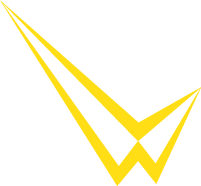Storyboarding/seeing through different perspectives
Storyboarding when designing and coming up with ideas although tedious can help with the end result. Through the process of storyboarding I attempted many activities from taking pictures at different camera angles to trying to create a simple storyboard or comic on my own. Through doing this I was able to understand the importance of storyboarding and why it is so crucial to do before designing a certain product or hosting an event. Even though my photos were extremely simple, I enjoyed taking them and looking through many different perspectives. After finishing and looking at all of the photos it was awesome to see that camera angles allowed each photo to correspond to one another similar to that of an actual storyboard. This allowed me to see the significance of different perspectives and different visuals when designing a storyboard.
One of the most important things that I learned in the design process is being able to organize all of your ideas and to not be all over the place. I think that storyboarding does this by allowing for an organized way of planning something while also providing different perspectives and ways of looking at it. The process of taking photographs at many angles in different scenes around my house allowed me to see the many perspectives that are necessary when storyboarding. In addition by creating the comic out of simple shapes I was able to see that storyboarding can be simple and still efficient when mapping out something.
When looking at an article titled Storyboarding in UX Design I learned a lot about storyboards and their purpose. Ultimately the article mentions how storyboarding is the visual representation of a story and is used a lot in many different types of design. Also the article mentions the many ways that storyboarding is effective. I learned through reading that storyboarding allows for the viewer to visualize, empathize, memorize, and engage. Overall the effects of a storyboard can be much more effective than just words on a page.
In addition the article suggests ways of creating a storyboard and the steps and ways you can go about doing so. The structure of a storyboard as the reading mentions involves having a character, scene, and plot where you can then build off those to make a somewhat interesting and attention grabbing result. Some ways that you could do this is by first using text and arrows to map out what exactly is going to happen in your storyboard. You should then go about the illustrations. This will allow for a much more put together and organized storyboard. This is something I wish I knew before going about creating my storyboard and is definitely worth considering in the future.
The second article I looked into was titled Learn the Lingo, Camera Shots & Techniques in Storyboarding. This was similar to the first article, but it offered a bit more useful information. One thing that I found interesting was that it compared storyboarding to a visual language. This is because every frame of the storyboard serves as its own message. The article then talks about the many different camera angles and what each of them are called. I thought this was important information that allowed me to get a better understanding of the importance of camera angles and how they have such a large impact on each frame in a storyboarding.
When taking photos at different camera angles I feel that I learned a lot about what you should be considering when attempting a storyboard. Lastly, I learned about how a storyboard and more specifically the camera angles to a storyboard should be well thought out and appropriate to the story you are trying to show. It is important not to overcomplicate the story by going crazy with an extreme amount of camera angles. In order to reach a final product when storyboarding I think simplicity is needed, but also unique aspects. Overall it's mostly about creating an organized message through the use of camera angles that is eye catching and easy to understand.

